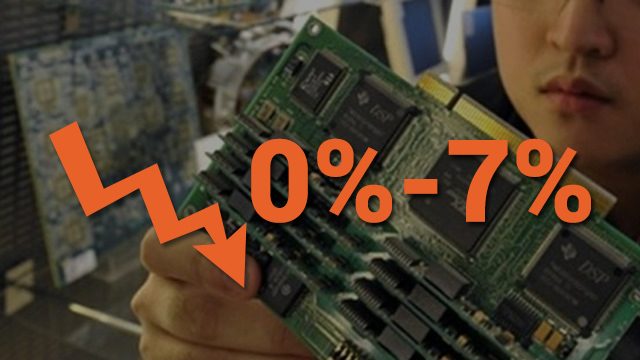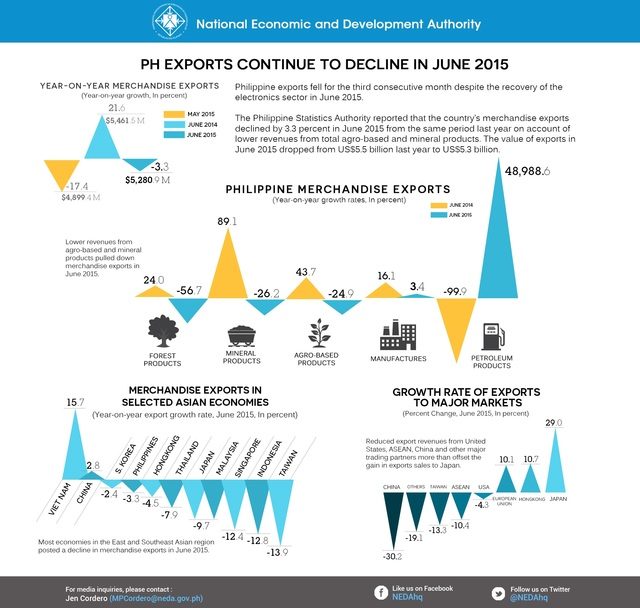SUMMARY
This is AI generated summarization, which may have errors. For context, always refer to the full article.

MANILA, Philippines – The Philippines will likely experience a slower or even a flat growth in electronics exports this year from last year, as demand from major trading partners like China remains sluggish, the Semiconductor and Electronics Industries in the Philippines (SEIPI) said.
Thus, SEIPI has slashed its 2015 growth target to 0%-7% from the initial projection of 5%-7%.
“We have reduced 2015 forecast to 0%-7% due to soft global economy, China in particular, which is among top export destinations,” SEIPI president Dan Lachica said on Wednesday, September 2.
He added that the United States and Japan, which are also major export destinations, have not recovered as well.
Worries over China’s unstoppable sell-off are sending many Asian financial markets, including that of the Philippines, into a tailspin.
For instance, Philippine exports fell for the third consecutive month in June 2015, despite the recovery of the electronics sector.
Socioeconomic Planing Secretary Arsenio Balisacan said that weak external demand continues to affect the country’s external trade performance, particularly for the merchandise exports sector.
The country’s merchandise exports declined by 3.3% in June 2015 from the same period last year.

Downward spiral
China is the Philippines’ third largest export destination, taking in some 12% of total exports.
SEIPI said electronic exports make up around two-fifths of the Philippines’ total shipment, so a sluggish or flat growth would pose a risk to the country’s economic growth. SEIPI is made up of about 200 semiconductors and electronics manufacturers.
After the government announced a gross domestic product (GDP) growth of 5.6% in the second quarter, Balisacan said his office will likely cut the full-year target of 7% to 8% this year. (READ: Second half will be better – economists)
He said a “more realistic” goal would be between 6% and 6.5%, citing risks from the El Niño phenomenon and sluggish exports.
Sought for comment, Philippine Institute for Development Studies (PIDS) President Gilberto Llanto said: “There is a large trade between the Philippines and China. The same way ASEAN has a large volume of trade with China. So if we export the same commodities with China, it could be difficult for us as China will likely cut down the prices of their commodities.” – Rappler.com
Add a comment
How does this make you feel?
There are no comments yet. Add your comment to start the conversation.